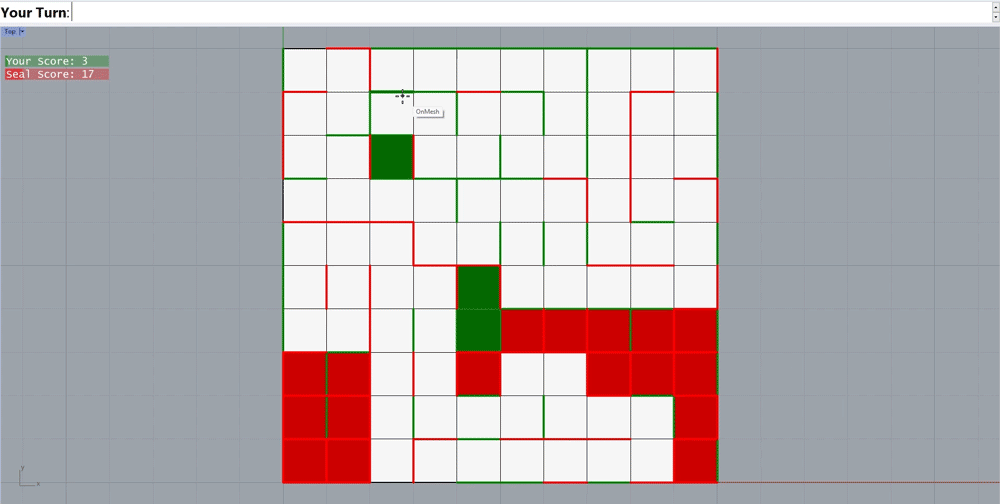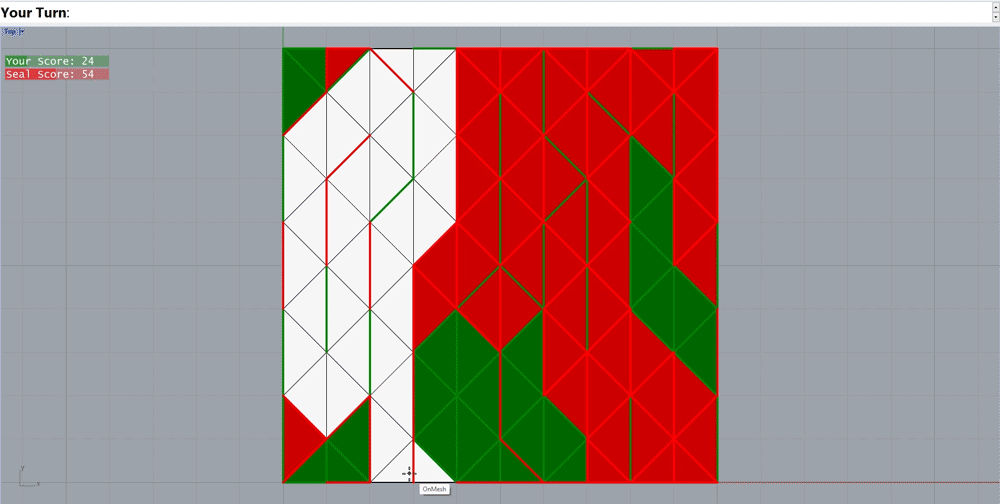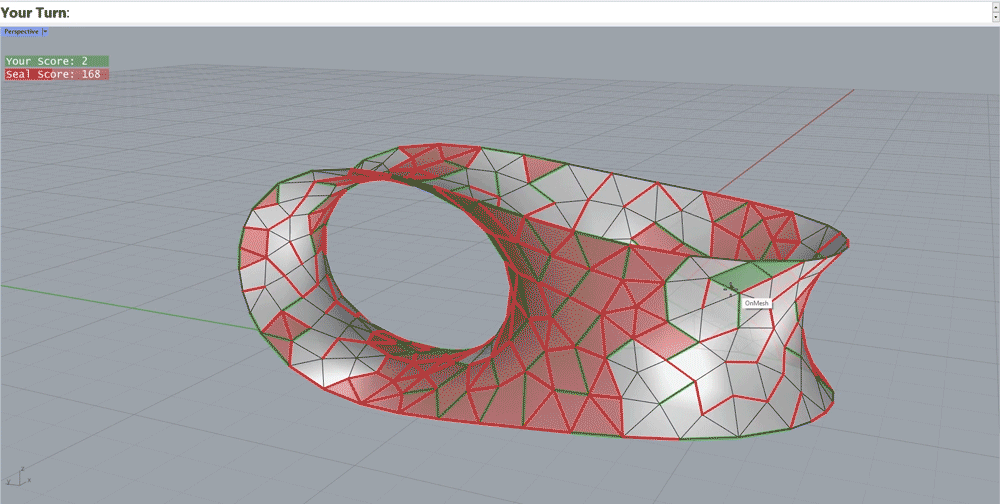We are architects trying to code. Since we use Rhino as our main modeling software and are aware of the opportunities it proposes, we have decided to set up numerous conventional games for Rhino software in terms of adding some fun to the usual daily works by them. Our aim is not only to practice coding but also to share our experience and outcome with others as an open-source plugin in order to help other Rhino developers to get inspired and develop different ideas. It is obvious that our purpose is not to develop professional games, but to benefit from Rhino potentials to find some entertainment! This journey has been started by Dots and Boxes and will continue to other ones or update them. So, stay tuned and check Food4rhino and Github to access the latest versions of our games.
- Mehrzad Samadi
- Atoosa Sarrafi
- Atrin Poursadrollah
Dots and Boxes have classically been played on paper using pencils by 2 or more players. It was first described by a French mathematician, Édouard Lucas, in the 19th century, and he called it La Pipo pipette. This game has been known by many other names including the Dots Game, Boxes, Squares, Dot to Dot Grid, and Pigs in a Pen!
This game usually starts with an empty grid of dots on a surface. The innovation added to this new version of Dots and Boxes is the possibilities of playing on all Rectangular, Triangular or more complex mesh contexts (Planar or even None-Planar). The first moves are usually the blindest ones. players take turns drawing a single horizontal or vertical line between two un-joined adjacent dots in an x * y array. But there are two main rules for this game:
- Avoid drawing the one before last edge of each rectangular/triangular cell.
- If there was no way out, avoid handing the longer tunnel of squares to your opponents.
Whenever a player makes a move that encloses a unit square with the drawn edges, the player is awarded a point and must then draw another edge in the same move. The most exciting part of this game starts when you have to choose between tunnels. The game ends when the entire grid has been drawn and the winner is the player with the most boxes claimed.



